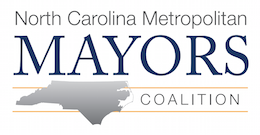Transport Playtime Is Over (Carolina Journal)
RALEIGH – To North Carolinians like me who grew up in a state once considered the epitome of rural and small-town life, the opportunities and challenges of urbanization still taking some getting used to.
Having lived in a few months in Los Angeles and a few years in Washington, I’ve experienced my share of maddening highway gridlock. Visits to other cities across the country have confirmed my dislike of traffic congestion and my preference for life and commuting on a smaller scale.
Only, North Carolina’s traffic doesn’t compare as favorably as it used to. Indeed, according to the latest national study of state highway performance by David Hartgen and his colleagues at the Reason Foundation, North Carolina ranks very poorly – 42nd – in urban interstate congestion.
You read that right. North Carolina’s urban interstates are among the most congested in the United States.
Stretches of I-77 and I-85 around Charlotte, I-40 in the Triangle and Triad, I-95 in the east, and I-26 in the west all feature crippling congestion during rush hours. As Hartgen wrote a while back in a John Locke Foundation study, traffic congestion in North Carolina is projected to more than double over the next quarter-century, with worsening conditions not just in Charlotte, the Triangle, and the Triad but also in smaller cities.
“That increased congestion threatens the state’s economic future,” he said. “Yet many regions have ignored the problem and propose spending limited transportation funds on ineffective projects that will not likely affect congestion.”
In other areas, North Carolina’s highway performance has improved somewhat in recent years. But major problems still remain, in both urban and rural areas. Here are some additional facts to keep in mind:
• North Carolina ranks among the worst in the country in the number of narrow highway lanes and in the number of deficient and obsolete bridges.
• Our motor-fuels tax is relatively high by national standards, and there is little public appetite for additional tax hikes.
• North Carolina is proceeding with several tollway projects, but it’s not yet clear how the public will respond to them.
Given the magnitude of the problem and the likelihood of tight government budgets over the next few years, North Carolina policymakers will need to make some tough decisions about priorities. We can’t afford to indulge pork-barrel considerations or fanciful notions of large numbers of Carolinians commuting to work by foot, bike, or train.
In other words, playtime is over. It’s time to get serious.
In yet another JLF study, published earlier this year, Hartgen argued that shifting funds from the 50 least cost-effective building projects could free up $2.5 billion to invest in maintenance or new capacity in high-priority transportation corridors.
Hartgen also argued that North Carolina needs to manage its transportation projects more efficiently, and avoid spending taxes from highway users on non-highway expenditures with limited payoff in safety, mobility, or economic development.
It’s a message that public officials and community leaders across our state need to hear, understand, and act on. Perhaps we should put it on the radio during rush hour, when we know they’ll have plenty of time to listen.
Hood is president of the John Locke Foundation.
By John Hood
September 07, 2010


